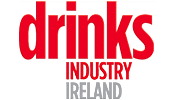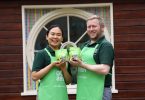Britvic for sophisticated soft drinks in pubs
The last quarter of Britvic Ireland’s financial year to 27th September was negatively affected due to a poor Summer but basically it’s back in sales volume and revenue growth over the full year. So states Kevin Donnelly, Country Director with Britvic Ireland and overseer of all things Britvic on the island of Ireland, “Just like Britvic plc, we’ve gained both volume and value market share.”
Originally from Dublin, Kevin was hired back in 2008 from Unilever after Britvic bought the C&C Group’s soft drinks portfolio for just shy of €250 million.
And while this year’s €120.4 million turnover figure is well down on the €270 figure back in 2007, it should be remembered that the soft drinks market today is very different to that in 2007. It’s also down a quite considerable chunk since the height of the Celtic Tiger era, “… but our share is up” he emphasises, “so a more accurate measure of our success is how much of the market we do have”.
And that would be about one-quarter of the total soft drinks market.
Now, in terms of revenue, the Irish company has gone from being Britvic plc’s worst performer to its second-best after France which – unlike our soft grey Summers here – benefitted from a good Summer.
“We’ve seen a real improvement in our Irish business over the last three years,” says Kevin of Britvic Ireland which now employs 420 permanent staff, “We’re seeing a bounce-back in the on-trade market too by way of a three-phase recovery: Dublin city centre and city centres in general are back in decent growth and we’re seeing suburban pubs in growth at the weekends – but parts of rural Ireland are still relatively depressed.
“But we anticipate a strong year driven by our qualifying for the European Championships, especially for pubs offering something a bit different such as food or those offering something more adult, more premium in soft drinks.”
He’s also seeing some health trends emerging, much in evidence in other channels, particularly the retail channel where the consumer self-selects. This is beginning to come through in sales of bottled water in the on-trade, for example, now growing in double-digit volumes. According to market figures, bottled water held just 1% of the soft drinks market back in 1980. Today it accounts for around 20%.
Corporate & Counterpoint
But the brands that Britvic offers tend to overshadow the corporate entity and the trade is probably far more familiar with Counterpoint.
“Britvic is our corporate brand but we live through our individual brands, so many consumers don’t link Club with Britvic, for example. Our corporate brand in the on-trade is Counterpoint. It’s only two years old but we’ve a very experienced, very active sales force for our direct accounts and it’s Counterpoint that’s our priority in the channel for all our household brands.
Wholesaling into the on-trade is still a huge priority for Britvic and Counterpoint is the route to the on-trade market for its soft drinks brands.
The soft drinks market
Per capita consumption of total soft drinks is decidedly lower here than in UK except for bottled water…. “…So there’s room for category growth here – that’s positive,” says glass-half-full kinda-guy Kevin, “We’ve a strong dairy heritage in Ireland and a tradition here of drinking milk.
“But there’s been a change in Carbonated Soft Drinks both here and in the UK. The consumer is moving from full-sugar to no added sugar and there’s certainly been a move from CSDs to stills and no/low sugar products around the world. This can be seen at its most advanced in the US but we’re seeing it being played out here quite strongly. We’re going the way of the US and the UK market into more stills and into that low/no sugar space.
“In 2015 we’ll sell more volume in the low/no sugar category than we will full sugar volume so it’s a significant moment. We’re seeing this trend continue strongly. Our last five launches into the Irish market have all been no or low sugar launches.”
Soft drinks & the on-trade
But considering the profitable margin, pubs remain a relative unknown for soft drinks consumption.
Focus research recently found that only 27% of respondents considered themselves likely to drink a soft drink in a pub, putting it way down in sixth place for choice of venue. Some 47% reckoned that they’d consume a soft drink at home, 41% would consume it at the cinema, 37% while eating out, 25% at a party and 29% with dinner – all ranked above the pub as a place to consume soft drinks.
Kevin agrees that we must diagnose why soft drinks penetration in the pub is so low.
“The primary reason for going to the pub is to consume alcohol” he says, “but now we’re seeing a change to the benefit of soft drinks such as the growth in food where the consumption of soft drinks with food represents an opportunity for the publican.
“Also, with spirits sales coming back, it will help sales of mixers.”
He points out that 25% of Millennials in London don’t drink alcohol but still want to go to pubs.
“Demand is growing, particularly amongst younger people for non-alcoholic beverages that are not just zero-alcohol versions of alcohol brands, so I think companies like us need to innovate in a space that’s specific to the on-trade and recognise that there’s an occasion where people don’t want to drink alcohol and seek something adult and more sophisticated.
“Conditions are improving for the acceptability of sophisticated soft drinks in pubs. We’re up for it,” he says, “and see it as an opportunity too.”
Adult soft drinks
He regards the progression of adult soft drinks as inevitable as we come out of a recession.
“I think that the suppliers have to catch up on that, something we hope to do over the coming years in innovation,” he says.
“The matching of premium mixers with premium gins, for example, has only emerged since the recession ended, so there’s a much more positive outlook for soft drinks in the coming years,” he notes.
Counterpoint is going to be very focused on this channel with on-trade exclusive adult soft drinks like the Thomas Henry range of premium mixers from Germany just launched.
“Selling adult soft drinks is a challenge as well as an opportunity though. In retail there are health trends where the different views of younger people are coming through – and there’s a demographic bubble at the older people level too.
On a recent visit to New York, he noticed that only two doors of a 10-door fridge cabinet contained ‘traditional’ CSDs, “… so the market is fragmenting and changing globally.
To this end, Britvic has some very strong innovations in the pipeline for the category over the next three to five years.
“Look at the foodservice trends where some consumers are health-conscious on every occasion,” he explains, “This is going to have to be recognised by suppliers – the fastest-growing trend in the on-trade soft drinks market is the growth of bottled water.”
With the interview drawing to a close, he points out that virtually everything Britvic Ireland sells here it makes here.
“The soft drinks category here has not evolved as quickly as it should have done over the last 20 years in terms of category diversity – look at the quantity and quality of ice-cream on offer today,” he says, no doubt harking back to his HB ice-cream days.










